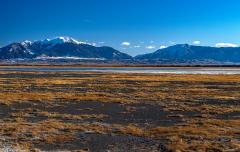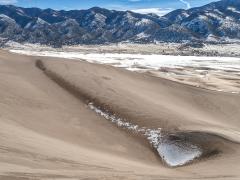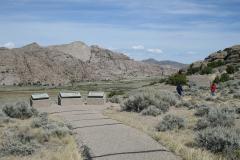The View At The Top Of A Dune Ridge, Great Sand Dunes National Park And Preserve
Whatever season you visit this national park, a must-do activity is to hike up to the top of a dune. The sand is velvety soft, but still takes a little effort to climb. An easy way to hike up to the top of a dune is to switchback your way up. Once you are at the top, following the dune ridge is the easiest way to continue onward, and from the ridge top, you have a broad view around the park.
- By Rebecca Latson - April 22nd, 2024 3:00am















